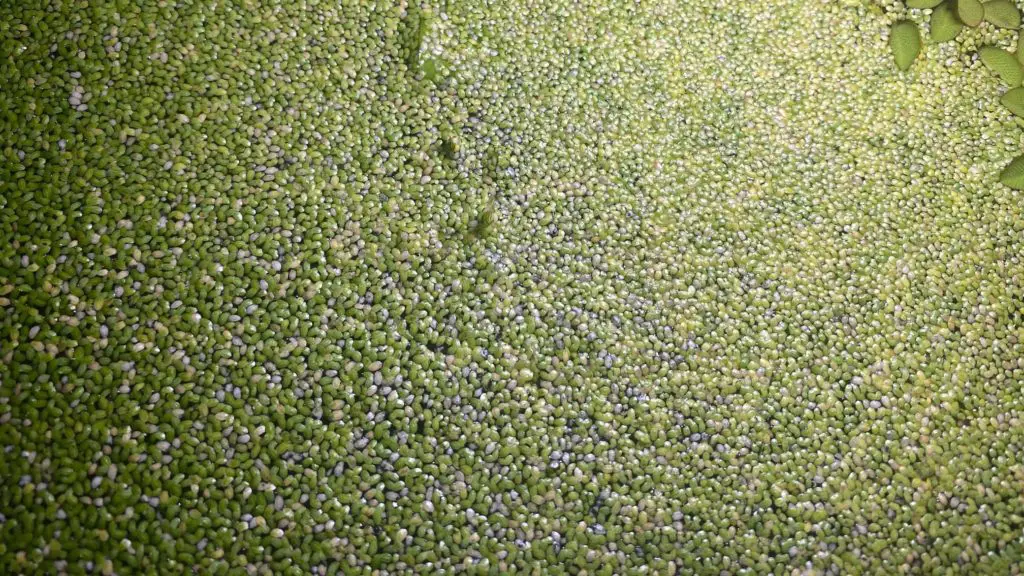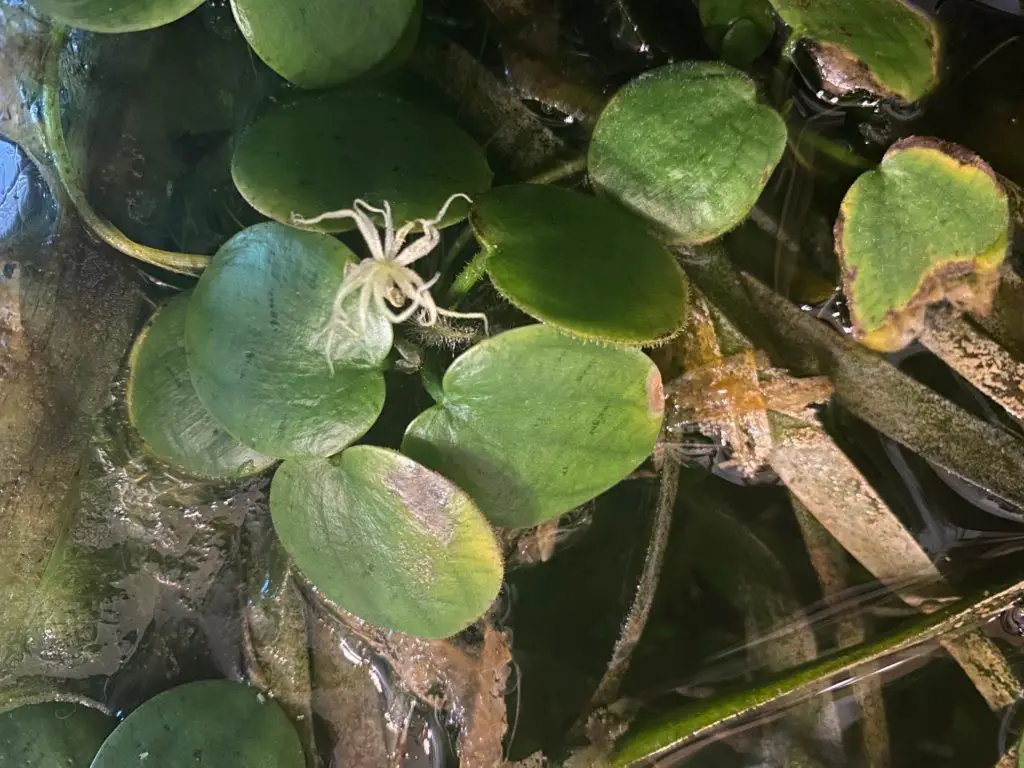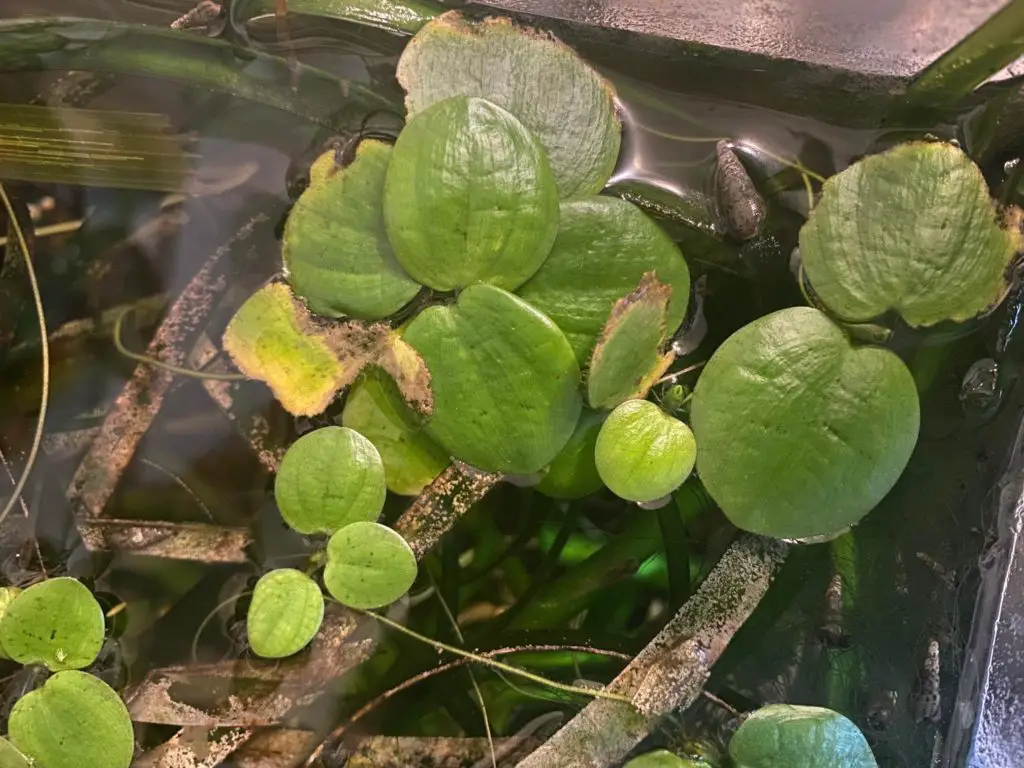Are you looking to add a touch of green to your aquarium? Or perhaps you’re after a natural way to keep it clean? If so, you’ve probably encountered Frogbit and Duckweed in your search. Both are popular floating plants known for improving water quality and creating a healthier environment for your aquatic friends.
Frogbit, a laid-back plant from Central and South America, adds a pop of color and keeps your tank chemical-free. Duckweed, a fast-growing plant, serves as food and shelter for underwater animals. Yet, both can take over your tank if not kept in check.
In this article, we’ll compare Frogbit and Duckweed in terms of their characteristics, growth, light requirements, and suitability for different aquariums. By the end, you’ll be able to pick the right plant for your needs. So, let’s dive in!
Key Takeaways
- Frogbit and Duckweed are two popular floating plants used in fish tanks.
- Frogbit is easy to care for, adds color to the tank, and cleans it of chemicals.
- Duckweed is best as food and shelter for underwater animals like fish or turtles.
- Frogbit and Duckweed are effective tank cleaners that require constant trimming.
Plant Characteristics

When weighing up Frogbit and Duckweed, it’s important to consider their unique characteristics. Frogbit is a low-maintenance option with its heart-shaped leaves, roots, and white flowers. On the other hand, Duckweed, with its oval leaves and rapid growth, might need a bit more of your attention.
Frogbit’s roots are longer, making it an excellent nutrient absorber and more sensitive to snails. Duckweed’s roots are shorter but spread faster, doubling their number within ten days.
Frogbit’s temperature tolerance is broader, between 42 and 91 degrees Fahrenheit. Duckweed can adapt to the same temperature range but prefers cooler waters. Speaking of oxygen production, both Frogbit and Duckweed are great contributors, enhancing the water quality in your tank.
Whether you choose Frogbit or Duckweed, both can beautify your aquarium and create a healthier environment for your aquatic friends. They can both improve water quality by absorbing nitrates and other chemicals. Remember the potential for fast growth, especially with Duckweed, and manage it properly. Remember, your choice should align with your ability to provide the necessary care each plant requires.
Growth and Maintenance
Caring for your floating plants can be rewarding, as you’ll notice their growth and positive impact on your aquarium’s ecosystem.
You’ll find that the growth rate comparison between Frogbit and Duckweed is stark, with Duckweed spreading much faster. This rapid growth means that Duckweed can quickly adapt to different tank sizes and provide ample food and shelter for your underwater animals.
It’s important to keep a few things in mind:
- Regular maintenance is vital to controlling plant overgrowth. For Frogbit, thinning can be achieved by cutting the roots, while a skimmer or net can be used for Duckweed.
- Be mindful of nutrient depletion risks. Both plants are known to be greedy, rapidly consuming nutrients in the water.
- Snails can pose a threat to the health of both plants. Keep a watchful eye on your tank to prevent these mollusks from damaging your plants.
- Frogbit and Duckweed can drastically improve water quality by absorbing harmful chemicals and producing oxygen.
Remember, ensuring the health and balance of your aquarium isn’t just about serving the inhabitants, it’s about creating a thriving ecosystem.

Lighting Requirements
It’s crucial to remember that even though they’re just floating on the surface, your aquatic greenery needs the right amount of light to thrive and keep your tank looking lively and fresh. The light intensity, duration, and spectrum play a significant role in the well-being of your Frogbit and Duckweed.
Here’s a quick comparison:
| Frogbit | Duckweed | |
|---|---|---|
| Light Intensity | Moderate | Low |
| Light Duration | 8 hours/day | Flexible |
| Light Spectrum | Broad | Broad |
Frogbit prefers moderate light intensity and about 8 hours of light per day. On the other hand, Duckweed adapts well to lower light intensities and has a flexible light duration.
Light sources affect the light penetration in the water, which influences plant growth. Both plants can adapt to a broad spectrum but have different light preferences. Frogbit prefers a brighter environment, while Duckweed can thrive in lower light conditions.
Considering these light requirements and availability is important when choosing between Frogbit and Duckweed. Remember, it’s not just about what you want—it’s about creating an environment where your aquatic friends can thrive. Be the light that guides their growth, and they’ll reward you with a beautiful aquarium.
Aquarium Suitability
Choosing the right floating plant for your aquarium isn’t just about aesthetics, it’s about ensuring the plant’s survival and compatibility with the tank’s conditions. You must consider the plant’s growth rate, maintenance, lighting needs, and suitability for different tank sizes.
Frogbit is an excellent choice if you’re looking for a habitat for your aquarium’s inhabitants. Its large, heart-shaped leaves provide a perfect shelter and are easy to care for. However, its growth rate may be challenging in small tanks as it can quickly take over the surface.
Meanwhile, Duckweed is a fantastic option if you have fish that enjoy snacking on greens. It grows rapidly, doubling in number within ten days, making it a constant food supply.
When comparing Frogbit vs. Duckweed for low light tanks, Duckweed is the clear winner as it can survive in such conditions, unlike Frogbit, which requires sufficient lighting. In terms of maintenance, Frogbit is less demanding than Duckweed, which requires constant trimming due to its fast growth rate.
Duckweed’s rapid growth is advantageous for larger tanks but may quickly become invasive in smaller ones. Both plants enhance aquarium aesthetics, but remember, the right plant depends on your tank’s conditions and inhabitants’ needs.

Choosing the Right Plant
When deciding on the right aquatic plant for your aquarium, it’s essential to consider your setup’s specific needs and conditions. Frogbit and Duckweed, while both beneficial, have different requirements and impacts on your tank’s ecosystem.
The larger frogbit can add a splash of color and is easier to manage due to its slower reproduction rate. It’s also a good choice if you’re seeking a beneficial plant for nutrient absorption. However, its size and rapid growth can lead to overcrowding if not properly managed.
On the other hand, duckweed is smaller and quicker to reproduce, making it a fantastic choice for larger tanks. Its robust nutrient absorption can improve water quality substantially. But bear in mind, its invasive nature means it may outcompete other plants for nutrients, affecting your tank’s balance.
Both plants are compatible with other aquatic flora, provided they are controlled. Cultivating them successfully requires regular trimming, and for Frogbit, potentially cutting the roots.
Remember, the choice between Frogbit and Duckweed depends on your tank’s size, compatibility with other plants, and commitment to maintaining the balance in your aquarium ecosystem.
Frequently Asked Questions
Conclusion
In conclusion, Frogbit and Duckweed can be great additions to your aquarium. Frogbit is low-maintenance and ideal for smaller tanks, while Duckweed, though more demanding, suits larger aquariums. They both improve water quality and create a healthier environment for your fish.
Remember, controlling their growth is crucial to prevent them from overtaking your tank. Choose the plant that best fits your aquarium’s needs and size.
